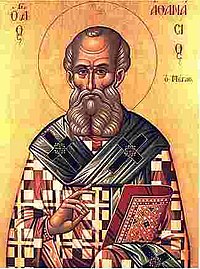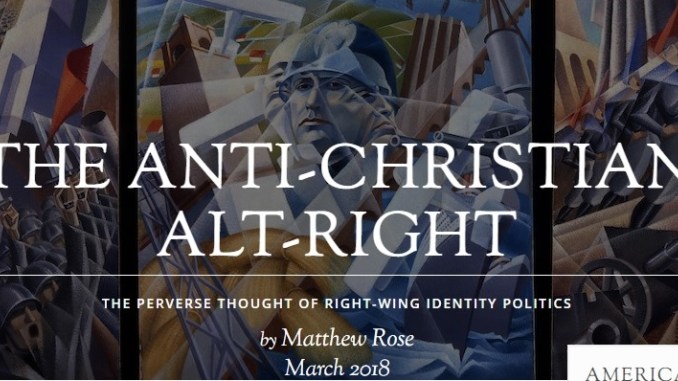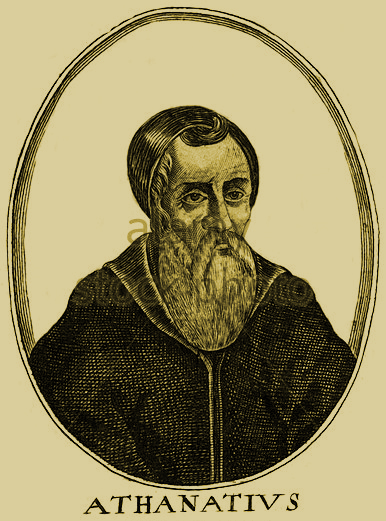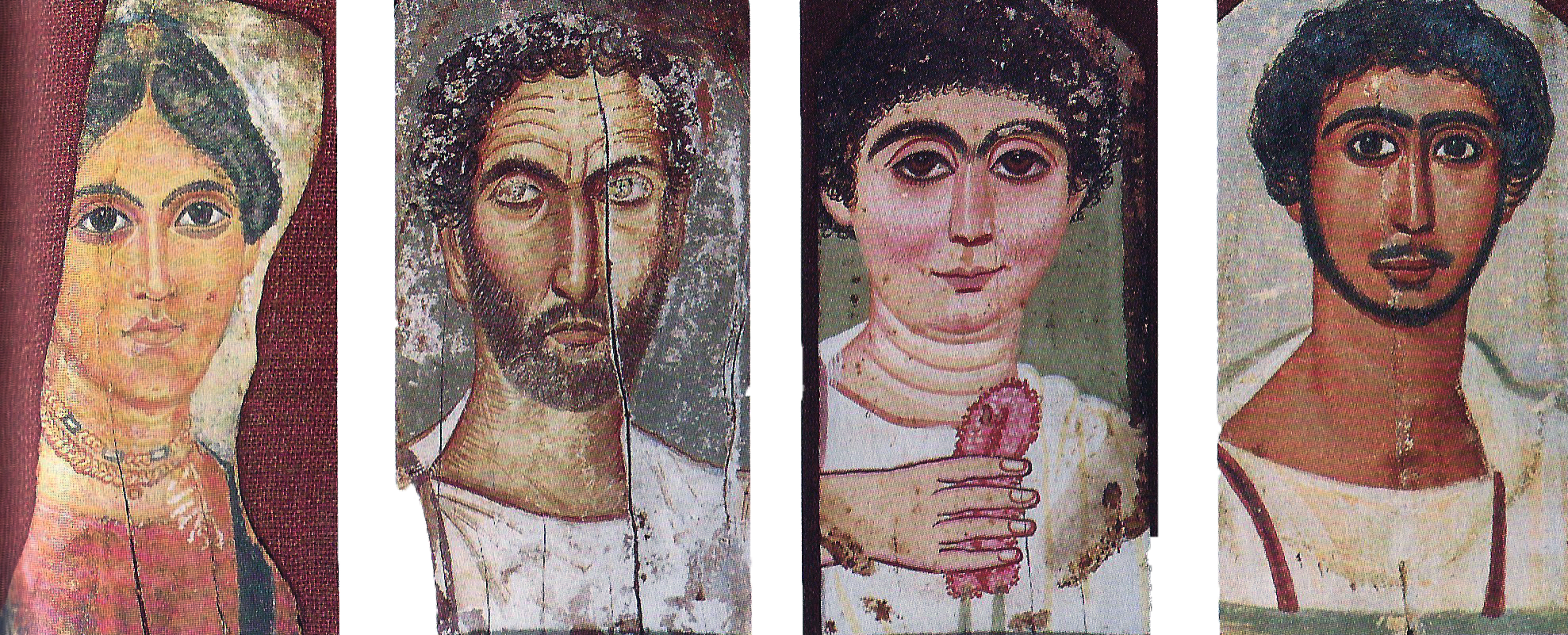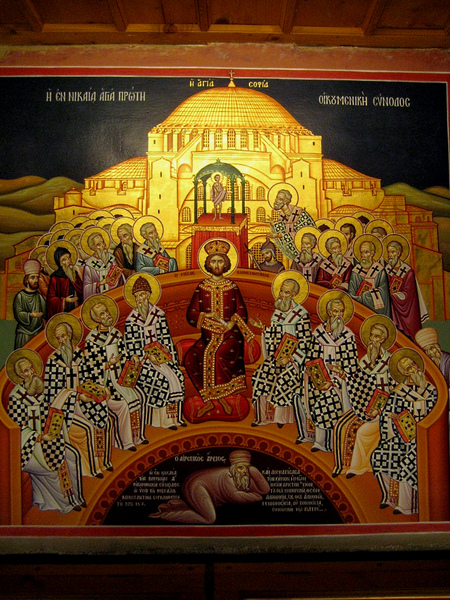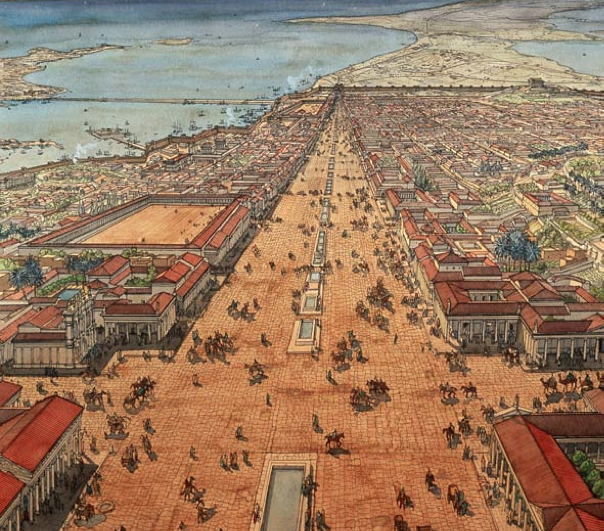Below, abridged translation from the first
volume of Karlheinz Deschner’s Kriminalgeschichte
des Christentums (Criminal History of Christianity)

Athanasius at the Council of Nicea
Chapter 18: Athanasius, Doctor of
the Church (towards 295-373)
‘Saint Athanasius was the greatest man of his time and perhaps, pondering everything in a scrupulous way, the greatest that the Church could ever have presented’.
— Abbé de Bletterinni
‘The grateful posterity gave the efficient Alexandrian bishop the deserved nickname of “the Great”; both the Eastern and Western churches venerate him as a saint’.
— Joseph Lippl
‘Every political question is taken to the field of theology; his adversaries are heretics while he is the defender of pure faith. The adversaries learn from him the association between theology and politics. As a kind of anti-emperor, he anticipated the prototype of the great Roman popes, being the first of the great Egyptian patriarchs who ended up separating their country from imperial unity’.
— G. Gentz
‘The actors in the history of the Church were largely the same as those in the history of Byzantium in general’.
— Friedhelm Winkelmann
‘From the 4th century to the 7th, by the Father, by the Son and by the Holy Spirit, the schools of theology, the popes and the patriarchs fought with every means at their disposal. They judged, degraded and proscribed each other; there began to operate secret services and propaganda machinery; the controversies degenerated into wild ecstasies; there were riots and street skirmishes. There was murder; the military crushed the revolts; the anchorites of the desert, with the support of the court of Byzantium, instigated the multitudes; intrigues were hatched for the favour of emperors and empresses. State terror was unleashed; the patriarchs fought among themselves, they were elevated to the throne and dethroned again as soon as a new trinitarian conception succeeded’.
— Hans Kühner
Kühner goes on to say: ‘The first great doctors of the Church appeared, and the saints, against all human passions, performed a series of mental exercises worthy of all praise that have become part of both the history of the faith and of the history of thought’. However, it should be pointed out that this did not occur against all human passions but largely because of them, because he who takes the spirit seriously cannot believe that one is two or three or that three is equal to one.
Christian theology calls this supra-rational and not counter-rational or irrational. It calls it mystery, not absurd. And having so many things between heaven and earth that our scholastic philosophy cannot imagine, it is unnecessary to take for granted everything that has been imagined, nor do we have to take the greatest absurdity and consider it a great mystery. ‘If God’, says Diderot, ‘for whom we have reason, demands us to sacrifice reason, he is a conjurer who makes what he has just given disappear’.
The complicated nature of God and the dominion of darkness
Any science worth its salt is based on experience, but what comes to be known about God, if it exists? In the early days of Christianity, ‘a whole mass of the most diverse ideas’ about the celestial spirits was considered (Weinel, theologian). In the 2nd and early 3rd centuries, ‘hardly anyone’ cared about the ‘Holy Spirit’ (Harnack, theologian), and in the 4th century, according to Hilarius, doctor of the Church, no one knows what will be the creed of the following year.
However, the theologians went deeper and deeper into the subject in the course of time. They came to discover that God was something like a single being (ousia, substance) in three people (hypostaseis personae). That this triple personality was a consequence of two ‘processes’ (processiones): of the generation (generatio) of the Son from the Father and of the ‘exhalation’ (spiratio) of the Spirit between the Father and the Son. That these two ‘processes’ were equivalent to four ‘interactions’ (relationes): the quality of father and son, the exhalation and the exhaled being, and these four ‘interactions’ in turn give five ‘particularities’ (proprietates, notiones). That in the end, all this, in mutual ‘permeation’ (perichoresis, circuminsessio) would give only one God: actus purissimus!
As much as they have given themselves the headaches over the centuries, the theologians know ‘that any intellectual work on the Trinity dogma will remain “an unfinished symphony”’ (Anwander) or, no matter how deep they delve into it, ‘a mystery of impenetrable faith’, as the Benedictine Von Rudioff humbly writes, asserting with all seriousness that none of it ‘speaks against reason; we do not say that three is equal to one but that three people are a being’. However, in 1977, it seems to Karl Rahner ‘that the history of dogmas, in the broadest sense of the word, continues and must continue—and therefore the history of dogmas continues’.
No matter how much theologians may say—an endless process of often nebulous concepts, especially because in the history of dogmas they have imposed their beliefs by all means, including violence—, those disputes have never possessed any basis of experience. Because of this, and speaking through Helvetius, ‘the reign of theology was always seen as the domain of darkness’.
In the 4th century an attempt was made to shed light on this darkness, and everything became even darker. ‘Everyone suspects their neighbour’, recognises Basil, father of the Church, ‘the blasphemous tongues have been released’. But the councils, enlightened by the Holy Spirit, that tried to clarify the mysteries, only contributed to create greater confusion. Even Gregory of Nazianzus, the holy father of the Church, mocks the clerical conferences and admits that they seldom come to a good end, stoking more controversy instead of softening it: ‘I avoid the meetings of bishops because until now I have never seen any synod ending well; they do not solve any ill but simply create new ones. In them there is only rivalry and struggles for power’.
On the one hand, of the important Council of Nicaea (325) hardly something survived, as well as some other synods. On the other hand, the victors prevented the circulation of the writings of their opponents, when they did not manage to destroy them.
Only a few fragments of Arius, or Asterius of Cappadocia, a moderate Arian, have come to us through quotations in replication writings. Although Catholic treatises were frequently disseminated, especially those written by the fathers of the Church Hilarius de Poitiers (died 367) and Athanasius of Alexandria (died 373), they only are subjective propaganda products. The no less tendentious historians of the 5th century Socrates, Sozomen, Theodoret and Philostorgius, of strict Arian tendency, are already of later generations.
A good idea of the spiritual historiography of that era and its unscrupulous tendency to falsify is provided by the first global history of the Church after Eusebius, that of Gelasius of Caesarea (died between 394 and 400).
Unknown until recently, it has been largely reconstructed and its importance lies in its sources: descriptions of the historians of the 5th century Church (Rufinus, the oldest in the West, Socrates and Gelasius of Cyzicus). Gelasius was also successor (the second) of Eusebius, a high dignitary and archbishop of Caesarea with jurisdiction throughout Palestine.
Friedrich Winkelmann has presented in a very concise manner the method of this unique and great contemporary history of the Church during the Trinitarian dispute: the stereotyped defamation of the adversary. The archbishop, author of the work, hardly cares about the advances or the differentiations produced. Of the Arians, he only relates reticences and intrigues; they are nothing but inconvertible troublemakers, ‘puppets of the devil who speaks through their mouth’.
Gelasius attributes to Arius a perjury. He also lies in saying that it was not Constantius but his son, the Emperor Constantine, who wanted to rehabilitate Arius. On the other hand, Constantine—another lie—did not banish Athanasius, the opponent of Arius, but sent him back to Alexandria full of honours. Gelasius is also the first to expose the falsehood that Constantine named in his testament Constantine II, the Catholic, heir to his kingdom; but that a local priest gave the testament to Constantius in exchange for the promise to support Arianism. The bishop of Caesarea not only masks all the negative, overlooking most of the events, but he also simply runs his imagination, against the strict truth; in sum, what manifests itself is ‘a great complex of a gross falsification of history’.
But was it Athanasius, doctor of the Church, no less scrupulous, agitator and apologist? Globally, he reprimands the Arians: ‘Whom haven’t they not outraged at their will? Whom have they not mistreated to the point that he died in misery or his relatives were harmed? Where is a place that does not show any memory of their wickedness? What adversary have they not annihilated, wielding pretexts invented in the manner of Jezebel?’
Even the Benedictine Baur speaks of a ‘civil war between Catholics and Arians’. Naturally, the same happens with all the authentic Catholic apologists: the Arians—whose name would soon become one of the worst insults in history of the Church—were prey to the devil and degraded the Christian name before a world, still half pagan, ‘with abominable intrigues, persecutory rage, lies and infamies of all kinds, even by means of mass murders’. Therefore, it was time ‘for this poisonous plant to disappear at last from the world’.
At the centre of this dispute among theologians was the question of whether Christ was true God, if he had the same nature as God himself. The Orthodox, although sometimes disappointed, affirmed this, while the Arians, the majority of the Eastern bishops at the height of their power (after the Council of Milan, 355), denied it.
When it seemed that the latter had almost won, they split into radicals, who considered the ‘Son’ and the ‘Father’ as totally disparate and different (anhomoios), semi-Arians, who in their opinion were considered more or less homousians, and a party that rejected the previous two and defended homoism, pointing out the similarity (which was left intentionally vague) or equality of ‘Father’ and ‘Son’, but not the ‘identity of nature’, the homousios of the Nicaeans.
The Arians and the Orthodox remained attached to monotheism, but for the first, no doubt closer to the primitive Christian faith, the ‘Son’ was totally different from the ‘Father’. He was a creature of God, although complete and very on top of all the others. Arius speaks of him with the utmost respect.
For the Orthodox Jesus was, in the mouth of Athanasius, ‘God made flesh’ (theos sarkophoros), but not a ‘man, who leads to God’ (anthropos theophoros); the ‘Father’ and the ‘Son’ being a single nature, an absolute unit; they were homousios, of the same nature. For only in this way was it possible to sustain the dogma of the double, or even triple, divinity and pray to the ‘Son’, the new one, as well as to the ‘Father’, as the Jews already did. The Arians were accused of ‘polytheism’ and ‘having a big God and a small one’.
For the popular masses of Constantinople, who, as everywhere, flocked to the preferred ‘National Church’, the question of faith was apparently captivating and fascinating, with the Christological dispute reaching a great popularity in streets, squares and theatres, as ironically says a contemporary of the late 4th century:
This city is full of artisans and slaves who are profound theologians, who preach in stores and on the streets. If you want to change a coin with a man, first he will inform you about where the difference between God the Father and God the Son lies, and if you ask for the price of a loaf of bread, instead of answering you they will explain that the Son is below the Father; and if you want to know if you have the bathroom ready, the bathroom attendant will answer you that the Son has been created from nothing.
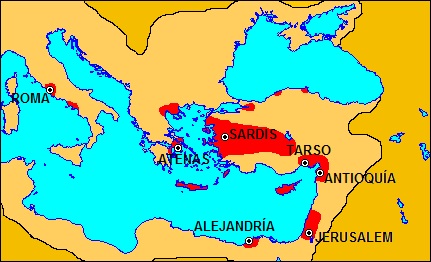 Left, one of the maps that appear in Soberana’s PDF (Caption: ‘The extension of Christianity around the year 100. Note that the areas of Christian preaching coincide with the densest Jewish settlement areas’). Also remember that, right after Julian was assassinated, a Christian emperor ordered the burning of the Antioch library that had been founded by Julian: a library that presumably contained documents showing the true origins of Christianity.
Left, one of the maps that appear in Soberana’s PDF (Caption: ‘The extension of Christianity around the year 100. Note that the areas of Christian preaching coincide with the densest Jewish settlement areas’). Also remember that, right after Julian was assassinated, a Christian emperor ordered the burning of the Antioch library that had been founded by Julian: a library that presumably contained documents showing the true origins of Christianity.